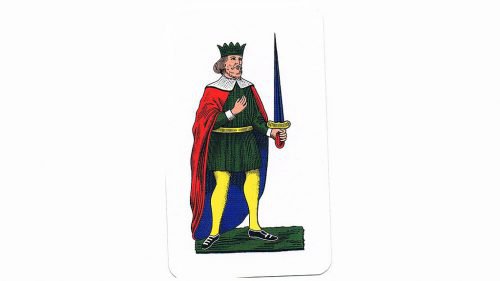
- Version
- Download 26
- File Size 10.18 KB
- File Count 1
- Create Date January 2, 2025
- Last Updated January 2, 2025
Playing cards have a rich and diverse history that spans centuries and cultures. The origins of card games are often traced back to China in the 9th century, but the influences of cards have spread across the globe, impacting different cultures, from tarot cards used for divination in France to the recreational games recorded in Britain. The symbols used on playing cards, particularly the suits and face cards, have evolved and adapted to reflect the values, hierarchies, and beliefs of the societies that produced them. These archetypal symbols, ingrained in history, are highly useful for modern logo designers.
The Suits of Playing Cards: Interpretations and Symbolism
The four suits of a standard 52-card deck—hearts, clubs, diamonds, and spades—are more than just shapes or symbols. They carry deep, symbolic meanings, rooted in cultural and societal values. Here are several ways these suits have been interpreted throughout history:
1. Seasonal Associations
- Hearts: Spring
- Clubs: Summer
- Diamonds: Autumn
- Spades: Winter
This interpretation connects the suits to the changing seasons, suggesting the cyclical nature of life.
2. Stages of Life
- Hearts: Early age (youth)
- Clubs: Youth
- Diamonds: Adulthood
- Spades: Old age
The suits here represent the various stages of a person's life, from birth to death, indicating growth and maturity.
3. Elemental Associations
- Hearts: Water
- Clubs: Air
- Diamonds: Fire
- Spades: Earth
This mystical interpretation links the suits to the classical elements, emphasizing their role in life and nature.
4. Characteristics and Personality Traits
- Hearts: Love, emotions, vulnerability, the home
- Clubs: Intellectual musing, education, creativity
- Diamonds: Career, security, judgment, responsibility
- Spades: Wisdom, transformation, spirituality, acceptance
Each suit reflects different traits and values, allowing logo designers to tap into these concepts depending on the brand's ethos.
The Face Cards: Hierarchy and Social Influence
Face cards—kings, queens, and jacks—have undergone changes in their depiction over time. These cards symbolize hierarchical structures and have varied across cultures. For example, in British decks, the roles of the king and queen have been swapped based on political power. In German decks, the queen was removed in favor of the jack. The introduction of the ace in 1765 marked the payment of tax on playing cards, with the ace becoming a symbol of prestige.
In modern design, the ace of spades is especially prominent in logos, often representing riches, fortune, and prestige. For example, PokerStars uses the ace of spades in its branding, with gold accents to evoke a sense of wealth. Other face cards, such as kings and queens, have less frequent use in logos but can still carry strong hierarchical connotations.
Numerical Values: Symbolism and Meaning
In addition to suits and face cards, the numerical values of playing cards hold significant symbolic meaning, often used in numerology. These meanings can help designers craft logos with deeper symbolic connections:
- Ace: Desire, hope, and new beginnings
- Two: Union, partnership, balance
- Three: Opportunity, choice, growth
- Four: Stability, foundation, satisfaction
- Five: Change, restlessness, freedom
- Six: Reflection, harmony, adjustment
- Seven: Struggle, victory, spiritual growth
- Eight: Power, control, influence
- Nine: Surrender, new beginnings, spiritual growth
- Ten: Success, completion, fulfillment (with potential for collapse)
Each number represents a step or progression in life, which can resonate deeply with audiences, especially in branding and logo design.
Conclusion: The Power of Card Symbols in Logo Design
The symbols on playing cards—whether suits, face cards, or numbers—are rich in cultural significance and can communicate complex messages. Logo designers can draw on these deep-rooted meanings to craft visuals that convey messages of love, power, stability, or growth, depending on the brand’s core values. By tapping into these archetypal symbols, companies can resonate with their audience on a deeper, almost subconscious level, making the visual identity not just recognizable but also meaningful.
| File | Action |
|---|---|
| Suits-and-face-cards-500x281.jpg | Download |








